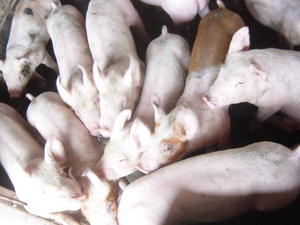You are here :
>
Subjects
>
Animal health
>
Management practices and gastrointestinal nematode infections
CIRAD © 2007 (All rights reserved) - Disclaimer stating - Page updated : 05/11/2008

Kagira J M, Kanyari P W N, Munyua W K and Waruiru R M 2008: Relationship between the prevalence of gastrointestinal nematode infections and management practises in pig herds in Thika District, Kenya. Volume 20, Article #161. Retrieved printDate()November 5, 2008, from http://www.lrrd.org/lrrd20/10/kagi20161.htm